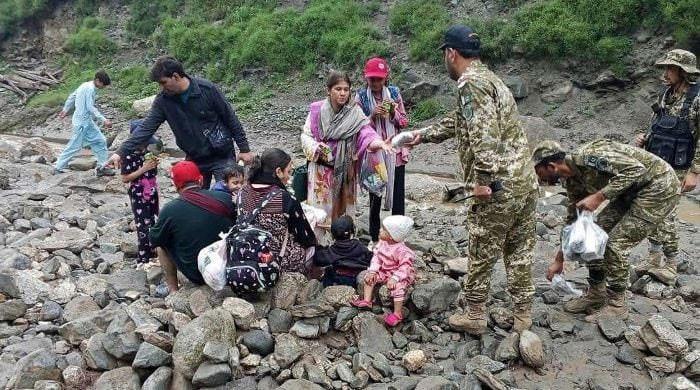- Chief Secretary says most events caused by glofs.
- Warnings The death toll can rise when more vehicles are still missing.
- Over 200 homes destroyed, villages cut off by rain.
Gilgit Baltistan Chief Secretary Abrar Ahmed Mirza said the region has been severely affected by a series of climate -driven disasters in the last two weeks, with at least nine people confirmed dead, more than 200 homes damaged and greater infrastructure left in ruins.
The region, located in the northern part of Pakistan, has seen extreme weather conditions, with ice melting, heat waves and heavy rainfall that triggers floods and landslides, The news reported.
By tackling a press release on Thursday, the chief official said the region was originally facing ice melting and heat waves, followed by a new spell with heavy rain that triggered flash floods and landslides, especially in diameer and astore districts.
“From June 10 to now, we have confirmed nine deaths, eight of which took place in the valleys of Thak and Thor in diamer while reporting a death from Astore Valley,” he said.
The main secretary noted that most events were caused by flooding of ice outbreaks (GLOFS), a phenomenon that is still more common due to rising temperatures and climate change. “We are witnessing the compound effect of extreme heat and erratic rainfall,” he added.
He said the floods had damaged about 200 homes, disturbed roads and water channels and cut off several villages in the Kharmang district where Bridges collapsed. “All 10 districts in Gilgit Baltistan have been affected to different degrees, but diamer is still the most affected,” he said.
According to Mirza, the government launched immediate rescue operations in collaboration with the Pakistani army, GB scouts, district administration and rescue 1122 using local volunteers. Stranded tourists were also lifted through army helicopter varieties in inaccessible areas. He acknowledged that Travel Advisories are regularly issued for high -risk areas, but said the public response remains inadequate. “People tend not to change their travel plans until the threat becomes imminent,” he observed.
He also warned that the death toll could rise as more vehicles are still missing, and four to five more bodies fears being found during the ongoing restore effort. The GB government continues to evaluate the full scale of damage and has promised to recover blocked routes and provide relief to displaced families.
Meanwhile, at least six people were killed and five others were injured due to heavy rain across the country for the last 24 hours and pushed the country’s death toll from Monsun to 258, according to National Disaster Management Authority (NDMA).
The agency reported on Thursday that three of the deaths took place in Khyber Pakhtunkhwa, where five people were also injured. In addition, two people died in Islamabad and a person in Sindh as a result of rain -related incidents.
Among the deceased are 89 men, 46 women and 123 children. The wounded include 243 men, 170 women and 203 children who highlight the widespread human toll caused by the ongoing weather.
The rain has also caused extensive property and livestock damage. Over the past 24 hours alone, 22 houses were reported destroyed and 36 livestock perished. Since the beginning of the Monsun season, a total of 1,027 houses have been torn off the rain, while 364 animals have died.



